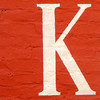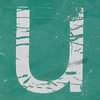I believe that all teachers should strive to be lifelong learners. For any teacher to be successful, they must constantly be learning themselves. Especially with all the new and constantly changing technology out there
The habit that will be the most challenging for me will be Habit #4, to have confidence in myself as a competent, effective learner. I do not have much confidence in myself when it comes to writing, especially, so the blogging part of the course will probably not be the easiest part for me. It will take some confidence for me to not procrastinate when it comes to writing my blogs.
The easiest habit for me will be to use technology to my advantage. I am very comfortable with using technology. I am usually up to date on the lastest technology. And I am very comfortable with "playing around" with technology to learn new things on my own.
The most important habit will be to view problems as challenges. I know there are going to be some things that I may have trouble with, but I need to remind myself that the challenges will provide me opportunities to learn. And that I am not doing this alone and I have resources out there to help me.
I am very excited about learning some new ideas from this class that I can take back and use in my classroom!










